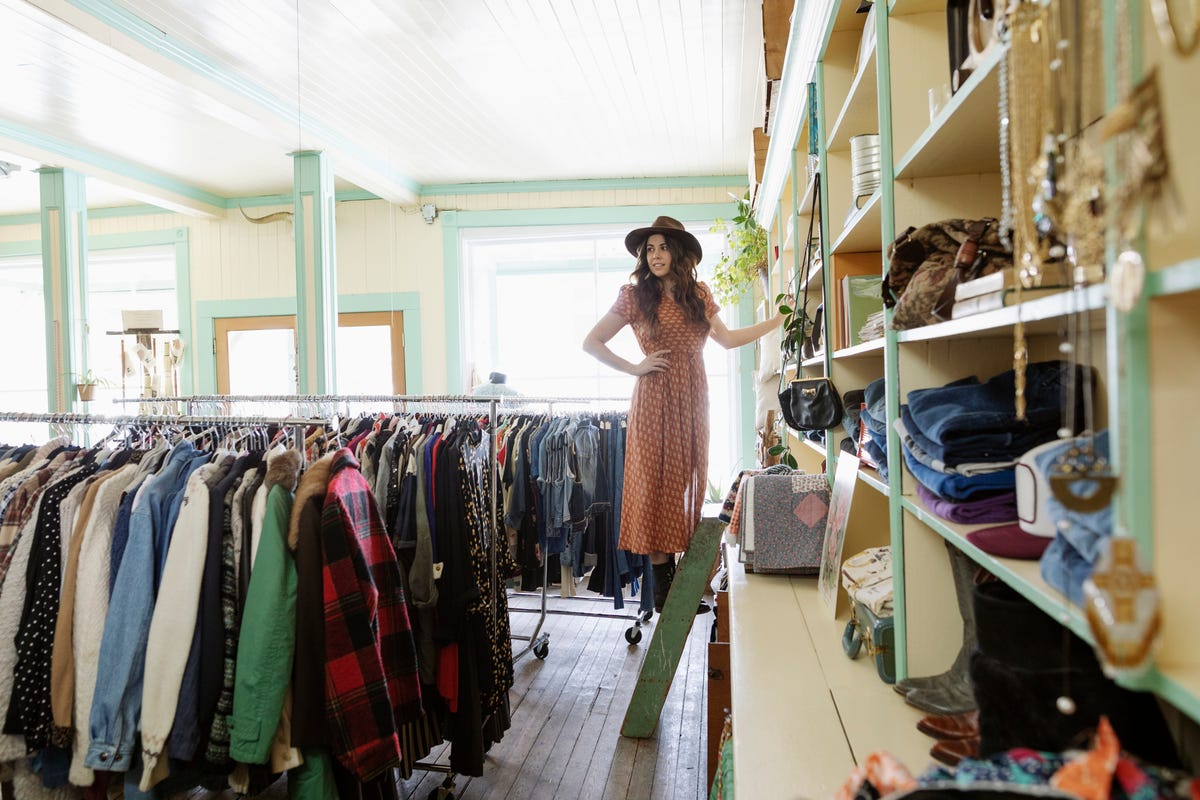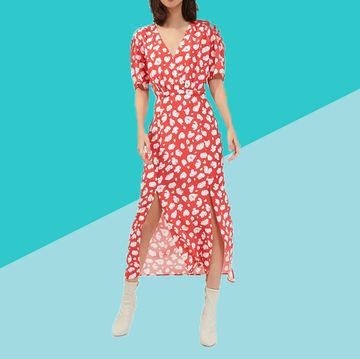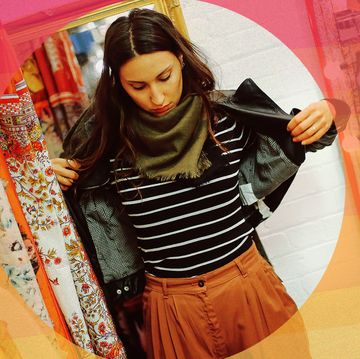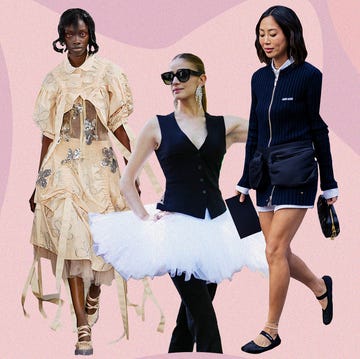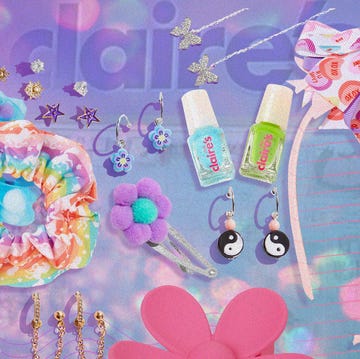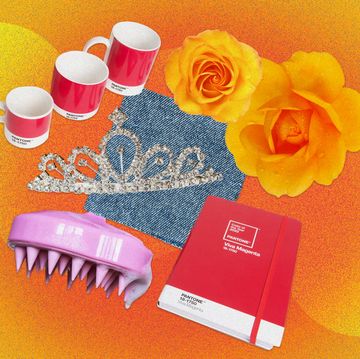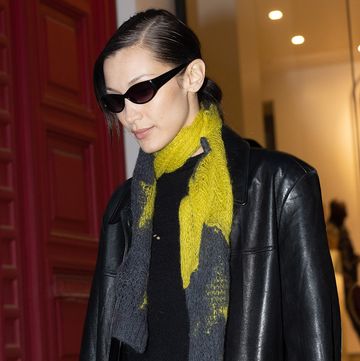Simply walking into a thrift store can be overwhelming. Sorting through the sheer number of garments, even if they are organized by color or size, can seem like a Sisyphean task.
But there are tricks to discovering diamonds in the rough that absolutely are lying in wait at any second hand store.
As my co-authors and I were writing a book and blog on thrifted clothing, we shopped at more than 400 thrift stores coast to coast. At each shop, no matter how unpromising the exterior, we found — and continue to find — new-with-tags merchandise, a vintage item or two, and a wealth of high quality garments at a fraction of their original prices.
Michelle Raven, founder of the Instagram community @whenthriftersthrift — which showcases thrifters and their finds from around the world — was the Style Program Manager at the ARC Value Village thrift stores in Minneapolis for more than six years. She and her staff acted as personal shoppers for clients, and helped many people navigate a thrift store for the first time. Now, they're going to help you navigate the world of thrift shopping from the comfort of your computer screen. Here, some of Raven's helpful tips to set yourself up for success.
Go during off-peak hours
“The first couple times you go, go when the store is a little more calm. Don’t go on a Saturday or Sunday, or during a sale day,” Raven advises. “If you have a friend who is comfortable navigating thrift stores, invite them along with you.”
Make it a short trip, she says, perhaps half an hour. “Maybe the first couple times you don’t do any shopping that’s going to lead you into the fitting room, so just look at shoes, jewelry and books, for example. You’re kind of dipping your toe in.”
Come prepared
When you graduate to trying items on, examine what you are wearing to the store and plan it out, Raven says. Pick shoes that are easy to slip on and off, and wear thin socks or footies. Consider wearing leggings and a thin top layer that can be pulled off easily to quickly try on a jacket.
It also helps to walk in the door with at least one item in mind. Raven, whose own wardrobe is 97 percent thrifted, keeps a wish list in a small notebook with her at all times. You may not find a particular item that day, but it gives you an immediate focus and a place to start. Narrowing your focus helps shrink a store down to size.
For my part, I spent a long time entering each store looking for a specific black knit Chico’s Traveler jacket that costs $150 new. I’d make a beeline to the blazer racks and then the coat section – because jackets can be found in both places.
At the blazer rack, I’d follow the advice of Joyce Sobczyk, a former personal shopper at Bloomingdale’s who for a decade has run a south Florida company, The Closet Consult, where she helps others organize, refresh or downsize their wardrobes.
Step back. Scan the store. Repeat
Sobczyk, a regular thrift shopper, first scans a rack from one end to the other. “Just looking at fabrics, I can find that Pendleton wool shirt right smack dab in the middle of a bunch of polyester,” she says.
An initial scan also helps spot original hang tags. Sobczyk describes glancing at a rack of undistinguished T-shirts recently. A Swiss Hanro cotton nightshirt that had been mis-hung there jumped out at her, thanks to the original tag that was hanging on it. Marked from the manufacturer at $112, the store was selling it for $3. She got it for $1.50 because all clothing was half-off that day.
When you do a visual scan, fine wool, silks and unusual prints will stand out. While looking for my black knit jacket, doing this visual scan helped me discover some fabulous blazers that were not black nor knit, including a striped jewel-toned silk Christian Dior for $11 at an Angel View thrift store in Cathedral City, California, and a pink Thierry Mugler blazer with a fantastic, futuristic button that was definitely worth more than the $3 that Goodwill charged me for the entire blazer. And last year – eureka! – I found the Chico’s Traveler black knit jacket I was looking for in my size at a Salvation Army for $6.99.
One last pro tip: always ask what specials a store is featuring. Some always give discounts to those in the armed services or seniors, and there’s usually a color tag or section that’s discounted each day.)
Don't be scared of the less-traveled areas of the store
Sobczyk says she also frequently checks out these areas, such as bedding (where she snags little-used linen tablecloths and designer throw pillows), the lingerie and nightwear section (which are especially rich in lightly-worn or never-worn robes and peignoir sets) and outerwear racks, particularly during the off season. In the middle of last summer in Wisconsin, for example, she found a mint condition shearling Ugg jacket for $19. She resold it online for $300.
If you are tiny, don’t overlook the children’s section. We have found hand-knit sweaters, hand-appliqued tops and boy’s wool blazers there that fit petite women. Since children grow quickly, their clothing – particularly dressy items – often are barely worn.
Raven notes that a store’s Halloween section (which has just been packed away for the year) can be a treasure trove of eclectic, funky and vintage items. “As wild and unwieldy as it can be, it’s a fun department to shop for really interesting finds,” she says. We have seen a vintage wool nurse’s cape, a silk sari, men’s bowling shirts with names in embroidered script, beaded vests and button-front sailor’s pants on the Halloween racks.
Raven suggests that thrifters be open to poking around in all departments, because categories are arbitrary and items can be mislabeled or mis-hung. “Retrain your brain not to think about size,” she recommends. “If you wear a size medium, look at smalls, look at larges, look at extra-larges. Going by the sizing on the label could lead to you missing something really great.”
Veteran thrifters know to zoom in on items hanging on aisle ends and on the return racks by dressing rooms or behind the counter. The reason? Another shopper found that item intriguing enough to carry around for a while, try on or almost purchase. Checking out what’s hanging in those locations helps you cut to the chase.
Let your smartphone be your thrifting buddy
When you run across a shoe or garment marked with a European size, it’s easy to look up the American equivalent on your phone. It’s also useful to keep a list of shoe, pant and shirt sizes for family and friends, should you find something that seems perfect for someone else. Raven uses her phone to compare prices, looking to see what the item is selling for on Poshmark or eBay. And if you encounter an unfamiliar label, a quick internet search will let you know whether you’ve found a gem from a lesser-known designer or whether it’s a fast fashion brand.
Always check tags and garment construction
Designer labels can be a tip-off to quality, but not always. Many couture designers have lesser-quality diffusion or bridge lines, so don’t be seduced by a name alone. (Wikipedia has a useful chart that demystifies the names)
The fiber content tag inside a garment can be even more important than the label or price tag. If a sweater is acrylic, it’s going to have a much shorter shelf life – and not hang as well – as a wool sweater or one made from luxury fabrics such as cashmere, angora, vicuna, mohair, camel hair or silk. Wool garments can be blends or 100 percent wool, and even all-wool fabrics come in various grades.
Beyond labels and tags, clothing construction methods are clues to quality. Bound buttonholes, which are “bound” by neat little rectangles of fabric and have no visible stitching, are an easy clue. They take more time and effort to make. Welt pockets, which look like longer, horizontal versions of bound buttonholes, are another time-consuming detail rarely found on fast fashion. Seam edges finished with bias tape or fabric rather than zig-zagged threads sewn on a machine called a serger, are found on higher quality clothing. Full linings that hang separately in dresses, skirts or pants are a good sign, as are matched plaids across a seam, topstitching on the front placket of a shirt, weighted hems, fancy buttons, working cuffs on a suit jacket or tiny handsewn “pick stitching” on a lapel.
Resist the urge to be seduced by the bargains and overbuy
“If you go wild, you aren’t being thoughtful and intentional about what you’re bringing in to your home,” cautions Raven. “I strongly encourage thinking about cost per wear. If you buy something for $10 and wear it once, the cost per wear is $10.”
Instead of the free-for-all, throw everything in the cart approach, Raven encourages thrifters to shop by outfit. Maybe start by finding a sleeveless top, she says, then a sweater to layer over it. Search for the jeans to match the look, then go for the boots and the watch and the earrings. “You may not purchase every piece, but you’ve slowed down and thought about the styling component and the actual wearability of the garment," she says.
“People are going to find more value when they are more intentional in their purchases.”
Allison Engel is a co-author of ThriftStyle: The Ultimate Bargain Shopper’s Guide to Smart Fashion and https://thriftstyleblog.com/. She is a journalist and playwright (Erma Bombeck: At Wit’s End, Red Hot Patriot: The Kick-Ass Wit of Molly Ivins). Twitter: @allisonengel
Get Shondaland directly in your inbox: SUBSCRIBE TODAY
